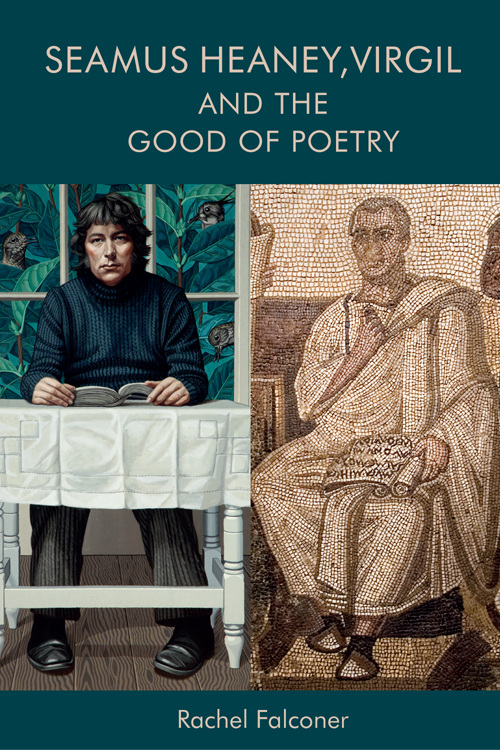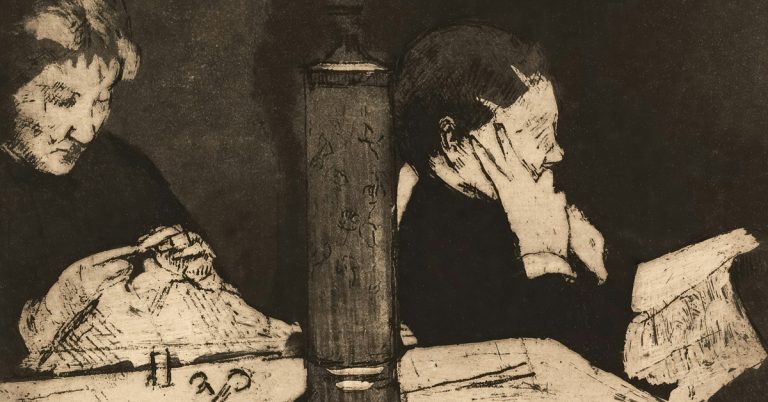
The work and life of Seamus Heaney (1939-2013) were, in Bill Clinton’s words, a gift to the world: ‘His mind, heart, and his uniquely Irish gift for language made him our finest poet of the rhythms of ordinary lives.’ Heaney, a graduate of Queen’s University, Belfast, was a professor and poet in residence at Harvard for 25 years, professor of poetry at Oxford from 1989-94 and a Nobel Prizewinner in 1995. A translator as well as a creator, his Beowulf (1999) was an acknowledged masterpiece.
Heaney’s debt to the modern poets has received much scholarly attention. More recently, a collection of essays, Seamus Heaney and the Classics (2019), has illuminated his engagement with Greek and Latin writers. Virgil’s Aeneid VI, which describes Aeneas’s Journey into the Underworld, was a constant presence in Heaney’s mind: ‘The motifs in Book VI have been in my head for years – the golden bough, Charon’s barge, the quest to meet the shade of the father.’ His verse translation of Aeneid VI was ‘homework’ to honour his ‘A’ Level Latin teacher, a recognition of Robert Fitzgerald his ‘father figure’ at Harvard, and an homage to his own father, whose death was ‘the final “unroofing” of the world’. Heaney worked and reworked the text and rhythms before signing it off as ‘final’ in July 2013.
Falconer, professor of modern English at Lausanne University, has spent much of her career researching the literary tradition of katabasis (descent into the Underworld). In this new study, she explores Heaney’s creative responses as translator, analysing and cross-referencing with knowledge and skill, and highlighting Heaney’s rhythms and sound, from the booming prophecies of the Sibyl to the ghostly gloom of the Underworld. Falconer uses Heaney’s ‘Golden Bough’ version of 1989 as her base text but Heaney’s final version, published posthumously by Faber, confirms that he regarded that as unfinished work. The following change, not in Falconer’s book, provides a flavour of how Heaney polished his text:
VI.126-7
facilis descensus Auerno
noctes atque dies patet atri ianua Ditis.
1989:
The way down to Avernus is easy.
Day and night black Pluto’s door stands open.
2013:
It is easy to descend into Avernus.
Death’s dark door stands open day and night.
Here, the ‘final’ version is more powerful. The alliterative ‘dark’ now agrees with ‘door’ and there is greater rhythmic menace.
In her last chapter, Falconer goes beyond verbal comparisons, describing the two versions as ‘a double music’. She analyses passages from Heaney’s final translation and comments on the rhythmic changes. Heaney’s earlier version of the story of Palinurus, set out in an Appendix, is in unrhymed tercets:
VI. 358-62:
paulatim adnabam terrae; iam tuta tenebam,
ni gens crudelis madida cum veste grauatum,
prensantemque uncis manibus capita aspera montis,
ferro inuassisset praedamque ignara putasset.
nunc me fluctus habet uersantque in litore uenti.
1989:
Little by little I was making headway,
slugging and struggling to land
in my waterlogged clothes, getting a grip
on razor-backed ridges,
when savage locals came at me
mad for the kill, and that much the madder
at the thought of me as rich pickings.
Now surf keeps me dandled and shore winds
roll me in closer and closer.
Falconer rightly spots the connection between Virgil’s ‘madida’ and Heaney’s ‘mad’/‘madder’. In conveying sound rather than meaning, Heaney was probably influenced by the modernist Louis Zukovsky (1904-78).
Heaney’s ‘final’ version of Palinurus is part of a longer narrative, to which he adapts his verse. Falconer records his move towards Anglo-Saxon rhythms and alliteration:
2013:
Little by little then I was making headway,
Slúgging towards land | in my wáterlogged clothes,
Gétting a grip | on the rázor-backed ridges, …
The shóre wínds | lóll me and róll me.
Falconer describes Palinurus as a ‘tragic foil for Aeneas’ and a ‘model of Trojan pietas’. Here, she underplays the Augustan context, which she has noted elsewhere. As a Roman audience will have known, the Palinurus story was an apologia for Octavian’s naval disaster at Cape Palinurus (Dio Cassius XLIX.1.1-6) two years after succumbing to ‘Somnus’when in command of the fleet (Suetonius, Div. Aug. xvi.1-2).
Falconer records the Virgilian echoes in Heaney’s three Eclogues. Orpheus, too, is a recurring theme where Heaney hovers between the ‘world-shattering loss’ of Eurydice in Virgil’s Georgics IV and the ‘pragmatism’ of Ovid’s Metamorphoses. In Heaney’s mind, Horace Odes 1.34 provided a reference point for the ‘deadly fallout’ of the Belfast bombings, the Twin Towers disaster of 9/11, and the wars in Iraq and Afghanistan.
Falconer has written a fascinating study, which sheds new light on one of our greatest poets. It is a perceptive work of scholarship that deserves to be widely read.
You can save 30% when ordering directly through our website by applying discount code EVENT30 at check out. Find our more about Seamus Heaney, Virgil and the Good of Poetry here.





